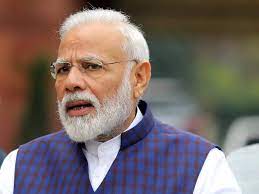Modi has exhumed Nehru’s Global South. Which fails the test of geography, geopolitics and economics

However fashionable it might be to repudiate and disown Jawaharlal Nehru these days, at least one element of foreign policy he bequeathed to us remains intact even in the Narendra Modi dispensation.
We could set up this argument by simply counting the number of times Modi has used the expression ‘Global South’ in his public speeches lately. This stretches across international events — the address to the US Congress, the BRICS summit at Johannesburg — to domestic platforms, including his Independence Day address from the Red Fort. And before that in January this year, a Voice of Global South summit.
Let’s first look at the idea in some detail, and why we think it marks a continuity in thought from the Nehru era.
It is the idea that India, or its leader, could be the leader of the rest. What does the ‘rest’ mean? It mostly means the world beyond the US, its European partners and its allies elsewhere.
Google the Global South. You will find lots of entries. Generally, and geographically, it refers to the countries in the Southern Hemisphere.
But then you run into challenges. Where do you then put Japan and South Korea, Singapore and further, in the deepest south, Australia and New Zealand? Geography, therefore, fails us. It gives us a broad sense but it’s far from accurate.
History tells us that the line notionally dividing the Global North and South is based on the ideas of former German chancellor Wilhelm “Willy” Brandt. In 1980, a commission chaired by Brandt submitted a report titled North-South: A Programme for Survival. This was soon enough known only as the Brandt Report. It draws a sadly arbitrary line generally dividing the world around a latitude of 30 degrees north, cutting through the Americas between the US and Mexico, running above all of Africa, then generally straight through Europe, and then rising to take China in its grand sweep.
But then it has to do some convenient gymnastics to exclude Australia and New Zealand, and if you go into finer detail, to carve out what we might call the Brandt Exclusion Zones of Japan and South Korea. The idea of a division into a rich north and a poor, struggling, developing south does not pass the test of geography.
The term likely came up first in a 1969 special issue of the Catholic journal Commonweal. And yes, you guessed it right given the year, this was a special issue on the Vietnam War. Writer Carl Oglesby complained about centuries of dominance by the North over “the Global South” to “produce an intolerable order”. This went through other iterations through the intervening five decades: Third World, Developing World. And now, Global South has been exhumed and resurrected. Narendra Modi has emerged as its most prominent and powerful global brand ambassador.
We’ve already seen how the definition fails the test of geography. Check it out on the touchstone of economics. On all calculations and from all credible sources, you find the number of nations featuring among the Global South to be 78. Out of these, the prominent ones are: China, India, Indonesia, Brazil, Nigeria and Bangladesh. Together, these six account for a bulk of all population in the grouping. What’s common between them economically?
We know the Chinese still love to make the supremely hypocritical claim that they are a developing country. But at a per capita income upwards of $12,000, they are anything but a developing country. Or a member of the Global South in the way the grouping is defined. And if indeed they were, would they want India to be the grouping’s leader?
Once again, if income were your criterion, and the geographical dividing lines could be shifted according to your convenience — in this case only generally north — Russia would soon look a worthier candidate to be in the Global South.
Geography and economics having failed us, we come to strategic denominators. Many of the “evil” Global North’s key allies happen to be in the south: Japan, Australia, New Zealand, South Korea, the Philippines and indeed, why not India as well?
“Natural strategic allies” is the expression three successive Indian prime ministers have used to describe our relationship with America. Two of the most important global allies of Captain America of the Global North, Japan and Australia, also happen to be our allies in the Quad. Now count also the countries in the Global South who might be our strategic allies. Do tell me if you find a couple.
The hard fact is, our allies, our economic interests, our diaspora, and through it our social, cultural and economic ties and interests, all lie in what we sneeringly dismiss as the Global North. And why do we do so? Because we see them as having gone ahead of us already. So we seek the leadership of the rest.
















